This year’s longlist for the Baillie Gifford Prize encompasses a diverse selection of some of the best nonfiction published in 2022. Narrative and investigative, historical and contemporary, this year’s longlist examines topics ranging from the British Empire to the paleobiological history of our planet. Below, the longlisted authors answer some of our questions and tell us a bit about their books and the research and writing processes that went into them.
*
Kingdom of Characters: The Language Revolution That Made China Modern by Jing Tsu
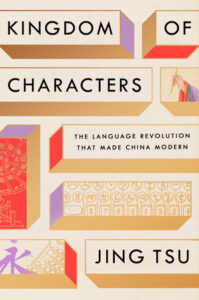
How did you conduct your research?
The research for this book took me to several continents and about a dozen countries. Archives can be a treasure trove of surprises as well as dead ends, though, so I was sent back to the drawing board on more than a few occasions. Along the way, unexpected and remarkable people in real life also offered pointers that propelled things forward—much like the human characters in the book.
How key has China’s ability to adapt to an increasingly modernized world whilst retaining its own culture been to its current economic success?
Adaptation and preservation have been the twin pillars of modern China’s approach to the outside world. The Chinese script revolution is a story about how the two imperatives, contradictory at times, were harnessed in China’s path to reach the present.
There’s been a growing Western interest in East Asian culture, from manga to in Japan to the increasing popularity of Korean cinema and TV. What do you think has caused that?
The 21st century has been aptly called the Asia century—where we expect to see the greatest economic growth and potential for social change. Well over half of the world’s population live in that part of the world, covering more than 2,300 languages, as opposed to the official 24 of Europe. There is no doubt much to learn about Asia as a whole and in its complexity—not just China, Korea, and Japan but also South and Southeast Asia.
Invisible Child: Poverty, Survival & Hope in an American City by Andrea Elliott

How did you conduct your research?
To tell the multigenerational story of Dasani Coates’ family, I spent nearly a decade conducting two kinds of research: immersive, real-time reporting on the family’s life and investigative research that unearthed for more than 14,000 records detailing the family’s history with the American government. (For greater detail, please see my summary on sources and methods, attached).
My immersion with Dasani’s family took me deep into poverty’s systems, standing in line for hours at the welfare office and the homeless intake center, attending family court hearings, going to hospital emergency rooms and drug-treatment centers, and shadowing the children in school. As the family moved between Brooklyn, Harlem, the Bronx and Staten Island, I was often with them: sleeping on their cold floor, attending family barbecues, watching the children dance for money in the subway.
The intensity of my reporting stems from a belief that well-told stories—those with depth and nuance—are the product of intimate knowledge. And that comes from being with people, day after day, deeply immersed in their lives.
How did you first become aware of Dasani’s story?
One afternoon in January 2012, I saw a statistic that stunned me: One in five American children were living in poverty. In raw numbers, this was a population of 16 million children, living in a superpower with one of the highest child poverty rates of the developed world. As a reporter for The New York Times, I began searching for a way into this story. And right in New York City there were record numbers of homeless children—more than 22,000 that year alone—in a city that had become a global symbol of inequality.
I finally met Dasani and her family that October, while standing outside their homeless shelter in Brooklyn. Dasani’s mother was walking like a drill sergeant with her children right behind her. I’ll never forget how united they looked, how powerful in their togetherness. Fifteen months later, I published a five-part series about Dasani in The New York Times and, for the next eight years, continued to follow Dasani’s life into adulthood.
This is your first book. What was it like making the switch from journalism to this longer form of writing?
I brought into this project a hard-earned skill that remains sacred to me: investigative reporting. During my years as a newspaper and magazine writer, I had learned the art of interviewing, the expertise of first-hand observation and the meticulous craft of mining records. What I yearned for—and ultimately found through this book—was the space to write. “Invisible Child” showed me the power that comes when investigative reporting is laid bare in book form.
Original Sins: A Memoir by Matt Rowland Hill

How did you conduct your research?
By making pretty much every mistake a person can make, and then sitting down and trying to remember them all.
Do you think there is an issue with the way we view addiction?
It’s almost a banality to say it at this point, but the problem with the way we view addiction as a society is that we see it as largely a medical problem for well-off and especially white users and a criminal one for the less lucky. But everyone knows the so-called war on drugs has failed—even the politicians who hypocritically prosecute it.
What I think is less well understood is that addiction isn’t a special condition from which some people suffer and others don’t. It exists on a spectrum. The modern west is undoubtedly the most over-stimulated—and therefore addicted—society there’s ever been. In other words, we’re virtually all addicts, to a greater or lesser degree—whether our “drug” is food, the internet, wealth, consumption, status, whatever. It’s convenient for us to see the junkie on the street as our image of the “addict” because doing so helps us ignore the way he or she holds a mirror up to the way we all increasingly live.
Is it difficult being open [ . . .] or is it more cathartic?
It was easy to be brutally honest at first because I didn’t imagine, at that point, anybody would read what I was writing. I just carried on in that mode.
As for catharsis, I’m not above taking it wherever I can find it. But, on the whole, I think there are better places to seek it than the blank page—for myself, at least.
The Barefoot Woman by Scholastique Mukasonga

How did you conduct your research?
The only resource I had to write this book about my mother was my own memory. What I brought together in the pages of The Barefoot Woman are memories of the childhood I lived alongside my mother Stéfania. It was in 1960 that my family, like so many others, was deported to Nyamata. I was three years old. All that we were promised, day in and day out, was death.
But our mothers promised us life, they promised us a future. Even if they themselves felt sure they wouldn’t escape the death they’d been promised (as was the case with Stéfania), they were determined to do all they could to let their children survive. Not only did Stéfania continually invent new hiding places for my sisters and me to take refuge from the recurring massacres; she also recreated, in our exile, a real village life made of conviviality and mutual aid among neighbors. I can still see Stéfania sitting in the place of honor on a termite mound, presiding every Sunday over a parliament of women.
In what ways has the 1994 genocide shaped modern Rwanda?
After the genocide of the Tutsis in 1994 (a hundred days, a million deaths), the country had to be rebuilt, which would require both justice and reconciliation. The victims and the brutalizers had to relearn how to live together. The government, like most of the population of Rwanda, immediately turned to that task; the first step was to abolish the ethnic identity card, inherited from the colonial era, which listed the so-called ethnic affiliation of every Rwandan. All the people of Rwandan speak the same language, Kinyarwanda, and recognize each other as simply Rwandans. Everyone has come together to pull the country from the ashes of the genocide. Rwanda’s economic success is astonishing, and many of the Africans I meet in my literary peregrinations consider it a model for all of Africa.
Rwanda’s borders were not laid out by the colonizers. Rwanda is an ancient kingdom whose oral traditions go back to the sixteenth century at least. The Hutu / Tutsi distinction designates not ethnic groups but social categories: farmers and cowherds. In a country where everyone speaks the same language and lives alongside each other, there can be no communities. Rwanda is one single nation.
The Escape Artist: The Man Who Broke Out of Auschwitz to Warn the World by Jonathan Freedland
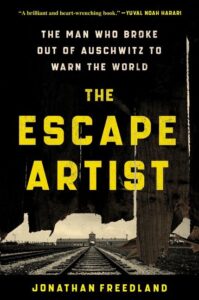
How did you conduct your research?
I was lucky that Vrba left behind so many words: whether court testimonies or interview transcripts; long, handwritten letters or his own memoir written six decades ago. But I was luckier still to spend many hours speaking both to his widow, Robin Vrba, and to his first wife (and former childhood sweetheart) Gerta Vrbova, who I found living alone, aged 93, in Muswell Hill, north London. In what would be the last weeks of her life, Gerta and I sat in her garden during the Covid summer of 2020, as she told me of the boy she knew before Auschwitz—and the man he became.
Why do you think Vrba continued to run, even after the war?
He was a man who could not accept imprisonment in any form, whether his captors be the Nazis of Auschwitz or the rulers of postwar, communist Czechoslovakia. He believed it was obvious that he should be free. It’s also true that he was a man who struggled to conform, and who often ended up in conflict with the institution—or even country—where he found himself. He could not get along with the infant state of Israel where he lived for a short while in the late 1950s, just as he clashed with colleagues in the research job he held in 1960s London. And so he moved on. That was Vrba’s modus vivendi: if he reached a dead end, he simply found a way out.
Why do so few people know about Vrba today?
The book argues that Vrba was the teller of inconvenient truths. His Holocaust testimony did not paint a simple picture of evil Nazis pitted against a just and noble world. Instead, he pointed an accusing finger at the Nazis, of course, but also at those who had failed fully to act on, or pass on, his warning: that included the Allies, Churchill and FDR, and even specific Jewish leaders, especially in Hungary.
That made him an awkward witness, one who could not be relied on to tell a comforting tale—but one prone to descend into “accusations and rage”, to quote one colleague. The result is that people kept their distance: he did not become a media star or celebrated writer. Experts would seek him out for his almost unique expertise in the mechanics of the Auschwitz death camp, but he did not become famous. And so his story remained known only to specialist historians and the like. The Escape Artist seeks to correct that oversight, in the hope that Rudolf Vrba might perform one last act of escape—that he might escape our forgetfulness, and be remembered.
Otherlands: A Journey Through Earth’s Extinct Worlds by Thomas Halliday
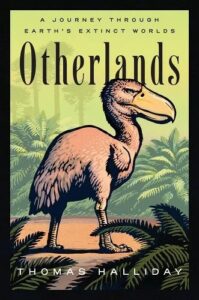
How did you conduct your research?
I researched Otherlands through the scientific literature, mostly. I’d start with a list of organisms known from a site and work out what stories could be told that linked together under a single ecological theme to be explored in that chapter. Once I’d settled on a few organisms to focus on, I’d fill in the rest of the story, making sure to (once again) find justifications in the literature for choices about behaviors, details of the environment, and so on. Much of the experiential aspect comes from having been in various types of environment myself, and where that was lacking, I’d read others’ accounts of traveling and living in, say, polar landscapes, or watch videos of lahars, to get a sense of what things actually would feel like.
What do you hope people will gain from this glimpse into our planet’s past?
In short, I think the answer is perspective. Earth has been home to millions of species and an uncountable number of different ecosystems. Almost all those species and ecosystems share one thing—they are gone. Life is persistent, but the specifics of how that life exists at any one time can be very fragile. The past teaches us that when you get major changes to the environment or climate, change is rapid and radical, and loss is permanent. We have evolved in an icehouse world, and should be very concerned about the prospect of the changes we are bringing to the climate and environment that have supported us since we emerged only a couple of million years ago.
How difficult is it to write about a world that existed long before humanity came into existence?
I have an advantage over historians in writing about the past—I do not have to worry about intent. Culture complicates matters, having to interpret whether an object has ritual or functional significance, or figuring out the perspective from which a manuscript was written. In biology, while evidence can often be interpreted in different ways, the differences are often more prosaic. As for reconstructing the worlds as a whole, the revolution in palaeobiology that has allowed us to discover ever more information about past ecosystems means that a lot of the work is done for you by the scientists—it’s just a case of translating the academic writing and bringing it together into a cohesive whole.
Super-Infinite: The Transformations of John Donne by Katherine Rundell

How did you conduct your research?
The book, from start to finish, was about a decade’s work. I did my doctoral thesis on John Donne at All Souls college in Oxford, which involved largely archival work—many hours in reading rooms across four countries, some beautiful and some ice-cold and smelling of dust and wet wool—and then the writing of the book was roughly another five years. I re-wrote it almost completely three times: I was sometimes exasperated and exhausted by myself and of my work in that time, but never once sick of Donne.
What do you think is John Donne’s legacy today?
I think he remains the finest poet of desire in English ever to have written: because he salutes, with passion and flair, the strangeness of our desire. He broke almost all the rules of poetry of his time: teaches us that language is not a set of rules, but a set of possibilities. He offers a bulwark against much that we need armoring against—against cheap, easy images of sex and sexuality offered by the media, against anti-intellectualism, against despair. He was a true original, and the legacy of a true original, I think, can be everlasting and inexhaustible, if we do the work of keeping them alive.
Is there a danger in trying to impose our current sense of morality onto historical figures?
I think it’s a very real temptation—but one we should resist, with all the nuance in our arsenal. I try to be very clear in the book that, while a lot of Donne’s verse reads as startlingly misogynistic—at one point he compares a woman’s sweat to the froth on a boiled shoe—his is a different time, and needs to be read with the care of a historically-informed gaze.
My Fourth Time, We Drowned: Seeking Refuge on the World’s Deadliest Migration Route by Sally Hayden
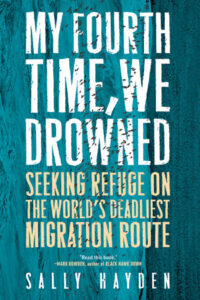
How did you conduct your research?
I’ve reported on migration-related issues for eight years, traveling to countries like Syria, Iraq, Burkina Faso, Sudan, Rwanda, Nigeria and Sierra Leone, as well as across Europe. This work means that I have met a huge number of people, and others started reaching out to me through social media and other avenues.
The book itself begins with me receiving a Facebook message from a man who was locked up indefinitely inside a Libyan migrant detention centre. From then, in 2018, I spent years in daily contact with a network of sources across many different detention centers, while traveling across much of Africa and Europe, following up leads and verifying what they told me. I also began sharing the messages I received from inside detention centers on Twitter, in a thread that eventually got millions of views. This resulted in even more sources getting in touch with me with information.
What can governments do to prevent similar abuses of refugees in the future?
My reporting shows that governments in the rich world are actually behind many policies and structures that trap refugees and migrants in abusive systems. The rich world is spending huge sums of money to effectively prop up dictatorships and militias in short-sighted efforts to stop migration at any cost, which actually oppress vulnerable people further, increasing the need to leave. We see this on Europe’s borders, but also on the borders of other countries, including the USA and Australia.
Since 2017, more than 100,000 men, women and children have been caught on the Central Mediterranean Sea trying to reach Europe, and locked up in detention centers that Pope Francis—among others—has compared to concentration camps. There, they are subject to a whole host of abuses that the International Criminal Court’s prosecutor has said may count as war crimes and crimes against humanity. Official estimates say that nearly 25,000 people have drowned or gone missing in the Mediterranean Sea since 2014, though the real number may be much larger.
There needs to be some kind of a reckoning, where the rich world faces up to the consequences and implications of its attempts to stop migration. That means a reckoning not just for the politicians but also its citizens, in whose names all of this is being done.
How far do you think there’s a disconnect between what governments say about refugees and how they actually treat them?
There is a huge disconnect. For example, politicians regularly talk about how they want to tackle the business model of human smugglers, but they are not providing safe and legal routes for people who need to reach safety to get there, leaving many desperate people with no other way to escape dangerous situations and claim international protection. This rhetoric also does not extend to going after top smugglers and traffickers. While reporting the book, for example, I attended trials for infamous human smugglers in Ethiopia and found that I was the only observer present – there was no one else there from any embassy, human rights organization or UN agency.
My book looks at the language politicians and bureaucrats use to talk about migration, and how it is another way of creating a disconnect between the general public’s understanding of what is going on, and the reality of it.
The Restless Republic: Britain Without a Crown by Anna Keay
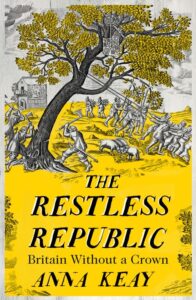
How did you conduct your research?
Digging through 17th-century diaries and memoirs, account books and court depositions in archives and record offices from Edinburgh to Dorset, Chester to Norwich. I wanted the book to be based entirely on first-hand material.
This book is full of these huge characters. Were there any historical figures from this period of time you were disappointed not to be able to include?
Yes—lots! I would have loved to have included William Webb the parliamentary surveyor who assessed the royal estates, medieval castles and hunting parks for sale—alongside the crown jewels and Charles I’s art collection. And I longed to find room for William Dugdale, one of Charles I’s heralds who travelled the land recording every medieval tomb and monument before they were torn down. Also Oliver Cromwell’s middle daughter, Elizabeth. I gathered lots of material on them, but in the end there just wasn’t room.
The civil war and the subsequent republican period are often seen as aberrations in British history. Do you think this is an accurate assessment, or has it had a more long-lasting impact on the country?
The British republic was unquestionably a constitutional failure. But that has masked the fact that so much else that was pioneered at that extraordinary time would endure—and still defines us: parliamentary supremacy, newspapers and mass media, the army and armed services, modern science, opera and musical theatre, internationalism, coffee houses…the list goes on.
A Fortunate Woman: A Country Doctor’s Story by Polly Morland
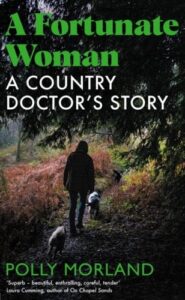
How did you conduct your research?
The documentary method, with its emphasis on close observation, has formed the spine of my research for A Fortunate Woman. This approach elicits a very particular kind of story, one that blends intimacy and distance in a way that’s proved vital to this book. It’s built around a year of observation and conversation with the doctor whose story it tells, above all, the many hours we spent walking together through the woods of the valley where the book is set. In part, this was a practical response to the safety concerns of the Covid pandemic, but it turned out that the dynamics of these long walks opened up the story far beyond the emergency of the moment, allowing the doctor to talk about her life. I also conducted numerous interviews with patients, colleagues and many local people, several of whom knew the doctor in John Berger’s A Fortunate Man. Because, of course, this is the valley and the community where I live too, so that meant a level of immersion in the life of this place that’s central to how the narrative unfolds. The days between interviews were spent buried in medical papers and core texts, in order to understand the context, history and current research around the practice of family medicine. From time to time, when lockdown permitted, we were also joined in the valley by a long-time collaborator of mine, the documentary photographer, Richard Baker, whose images are woven into the storytelling.
What aspects of medical life in the countryside have changed between 1967 and today?
Primary care has changed beyond recognition since 1967 when John Berger’s A Fortunate Man was written. The nature and sheer scale of those changes—in medical science, practice and outcomes, but also right across society, class, gender, the nature of rural life and community—is, in some sense, what A Fortunate Woman is about. Perhaps most significant of all is the gender shift within medicine, general practice in particular. In 1967, less than a quarter of family doctors were female. That changed slowly at first and since the millennium, at speed. By 2014, the majority of the GP workforce was female and that figure is set to rise further. The archetypal figure of the ‘Fortunate Man’ is now in fact a ‘Fortunate Woman’. And to me, it felt like high time to regard her with a female gaze.
To what extent do you think the pandemic exposed pre-existing cracks in our healthcare system?
Undoubtedly the pandemic forced a number of crisis issues to the surface, most particularly in the already beleaguered relationship between many family doctors and their patients. Covid had the immediate and savagely deleterious effect of further disrupting the human connection between doctors and patients, with the loss of touch, empathy, trust and later, the sheer difficulty of getting an appointment at all, as the service reeled under unprecedented demand and a workforce crisis.
But make no mistake: continuity of care was already in steep decline long before the pandemic struck. In spite of a growing body of evidence linking good doctor-patient relationships to better health outcomes, the shift towards a primarily transactional model of healthcare was already well underway. My book explores the human story behind all this, in order to show (not tell) exactly what is at risk of being lost. Because, of course, the doctor in A Fortunate Woman is, in many ways, one of the lucky few. She has managed to build and retain longstanding and warm relationships with many of her patients, their lives and stories entwined with her own. She is, in that sense, a rarity and a very fortunate woman indeed.
Dinner With Joseph Johnson: Books and Friendship in a Revolutionary Age by Daisy Hay
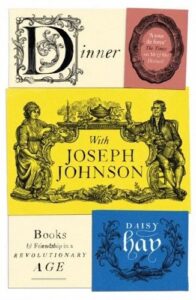
How did you conduct your research?
I visited archives all over Britain and Ireland and spent years working through the printed primary sources—letters, diaries, working papers—relating to each of the book’s sixty-three-strong cast. In between times I also walked the streets of the City of London, trying to think myself back into the old streetscape visible both in eighteenth-century maps, and—just—as the skeleton of the modern City. I read right across the variety of work Johnson published which was an extraordinary experience: one day I’d be reading a theological treatise; the next a novel, or a medical manual, or a cookery book.
And over a period of months I worked my way through the entirety of the Analytical Review—the journal Johnson published—which felt a bit like sitting in his dining room, listening to the conversation. The scale of the research needed to build a picture of the world Johnson made was a bit overwhelming at times, but now I look back on it I realize that it was the privilege of my professional life to have the opportunity to immerse myself in that world so completely.
Why do you think so many extraordinary people were drawn into Joseph Johnson’s world?
That’s such an interesting question. In part I think they followed each other, so that it was natural that in the tight-knit world of eighteenth-century bookmaking Priestley and Franklin would both send their manuscripts to the same man, and that their lead would then be followed by their friends and imitators. You can see that pattern repeating with Anna Barbauld, whose presence on Johnson’s list definitely drew more women writers, and more writers for children, into his orbit. But I don’t think it was just to do with the contingencies of individual relationships. Something about Johnson—and, in particular, about the space he created both in person and print—drew people towards him who had something important and original to say, and who needed the space to say it. At the heart of the answer lies Johnson’s capacity to be interested in absolutely everything, and therefore to make everything and everyone around him more interesting.
Do you feel that Johnson deserves more credit for helping to bring the ideas of so many intellectuals to the world?
Of course! He is the keystone of the story of the transformation that took place in literary culture in the final decades of the eighteenth century: the connecting chain between Cowper and the Romantic poets, the chief employer of Blake and supporter of Wollstonecraft, and without him so many of the voices who are central to our shared literary history simply don’t get a hearing. But it is also the case that with Johnson in the picture literature during this period doesn’t evolve in a vacuum; rather it develops in tandem and in response to the developments he gave voice to in science, philosophy, medicine, politics and art. That’s what is so striking about him—not simply that he enabled the work of an enormous number of important individuals, but that by putting them in conversation with each other he created the conditions in which the work they did took flight.
Legacy of Violence: A History of the British Empire by Caroline Elkins
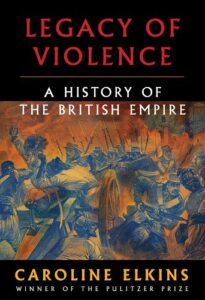
How did you conduct your research?
It was a global enterprise that eventually became a virtual one. Over the course of a decade, I travelled to four different continents, where I spent considerable time excavating archives, interviewing those who had lived experiences during the period of British colonial rule, and experiencing the places that would become major parts of the book’s narrative. History is about people, and it’s also about creating a sense of place for the reader, so I needed to accumulate that evidence in my research. Over time I also amassed my own virtual archive. Having collected document images and analyses, photographs, ethnographic observations, and interview testimonies, I began putting them into a virtual format that grew over time. I’m sure glad I did as this virtual archive was crucial for me once the pandemic began, rendering all of my research instantly accessible regardless of where I was.
To what extent do you feel that modern Britain is still shaped by narratives of empire?
One of the reasons I love being an historian is because the past does shed light on how we’ve become who we are in the present, and also gestures to what possible futures might look like. So, if we look at the history of Britain and its empire, one is hard pressed not to see the myriad ways in which the modern nation has been shaped by its imperial past—from monuments and street names to heroes and narratives of past glories, these are part of parcel of Britain’s national fiber.
Do you think Britain owes reparations for the damage it caused across the globe?
This is an enormous question currently hanging in the balance, with demands coming from various parts of the former British Empire. I do believe that, at a minimum, efforts at repair need to be undertaken. We now have considerable evidence documenting the systemic nature and impact of British colonial violence and economic extraction. Acknowledging this past, and apologizing for it, would be one step forward. Indeed, I was reminded of the importance of both of these elements when I was expert witness for the Mau Mau case in London’s High Court. The claimants—who had suffered considerable personal loss and torture in Kenya’s detention camp system—wanted, first and foremost, for the British government to recognize that these events happened and, in turn, for the government to undertake acts of repair. It was an incredibly powerful moment for me to see the impact of the cases’ settlement—which included acknowledgment and repair—on the elderly Kikuyu claimants and it continues to inform how I think about the question of reparations.



